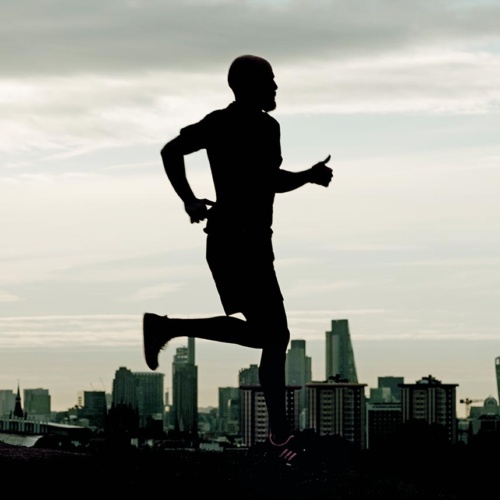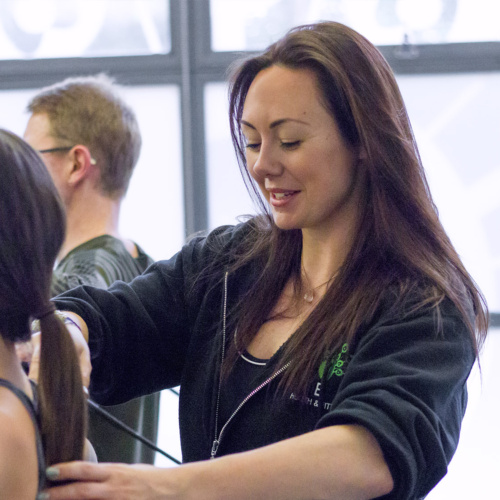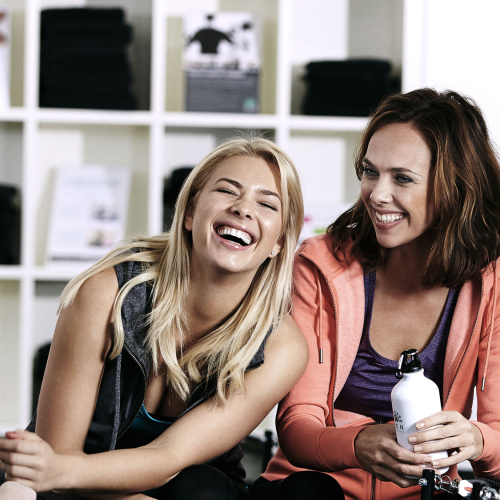Ten’s Physiotherapy Director takes us through the toll of the working day. We hope you’re sitting (un)comfortably.
7.30am – a good start
You’ve had a good night’s sleep, you’re up, showered and shaved (assuming you’re the shaving type), your discs are rehydrated, so you may even be a little bit taller than you were when you went to bed, and your muscles are well rested.
You’re feeling good – which is just as well, as this is the best it’s going to get today.
8.30am – hello, desk
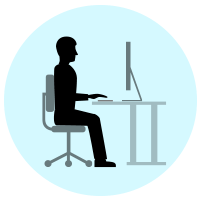 You’ve walked to the tube, and stood up all the way, so well done. Now you’re at work, coffee in hand. And for the next 45 min – 1 hour, no harm is done as your core and para-vertebral muscles are fresh and helping keep you in a good posture.
You’ve walked to the tube, and stood up all the way, so well done. Now you’re at work, coffee in hand. And for the next 45 min – 1 hour, no harm is done as your core and para-vertebral muscles are fresh and helping keep you in a good posture.
9.30am – the rot sets in
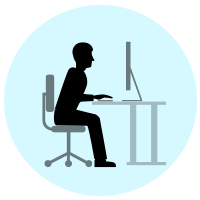 Even with the best intentions, your muscles tire and begin to fail over time, and you’ll gradually begin to slouch. You probably won’t notice for a while as the slump starts from your lower back, so there shouldn’t be any pain in your back, neck and shoulders yet.
Even with the best intentions, your muscles tire and begin to fail over time, and you’ll gradually begin to slouch. You probably won’t notice for a while as the slump starts from your lower back, so there shouldn’t be any pain in your back, neck and shoulders yet.
But as your lumbar (lower) spine slouches, your pelvis tilts and all the pressure – along with much of your bodyweight – is moved away from your sit bones towards your hamstring and gluteal muscles. No wonder so many people find themselves with a numb bum around mid-morning.
11.00am – coffee time – a brief respite
Time to get up and stretch your legs at the very least). Ideally take a toilet break, go out for coffee (caffeine, with a short walk as a bonus).

Ten minutes later you’re back at your desk. You’ve given your muscles some respite and they’re are slightly recharged, but they will fatigue faster than they did in the morning and the rounding ‘slouch’ then happens sooner (30 – 60 min in) and deeper, as it now involves the mid and upper spine.
By the time lunch comes round, you’ve spent a good hour at least in a slouched position, shoulders and upper back rounded, and with your head now several inches forward of its natural balanced position.
That may not seem important, until we remember that the head weighs around 10 pounds, and for every inch it’s out of alignment, you’re adding an extra 10 pounds of pressure on the supporting structures
And with the head just 3 inches out (try it – not much, is it?) that’s about double the weight of a bowling ball pulling on the spine, and the muscles of your neck, shoulders and upper back.
So don’t be surprised if the dull ache at the base of your neck that you’ve barely noticed has become a burning sensation that’s hard to ignore.
1pm – time for lunch
I’m an optimist, so I’m going to assume you’re heading out to get a sandwich, rather than grabbing your packed lunch out of your backpack (or heading off to the restaurant round the corner for a full-on 3-course lunch).
That’s because a decent walk will help to reset the body’s postural balance, and if this walk is long enough, the movement will help to rehydrate the discs of your back, stretch out your muscles and return some normality to your posture and alignment.
Before you say:
“This isn’t me – I don’t work these hours, my workstation has been ergonomically set up for me, my posture’s fine, and I don’t get a numb bum, backache or neck pain”
let me just point out the following.
- It doesn’t matter, the principles still apply.
- An ergonomic workstation will help reduce or delay the symptoms but it won’t solve the problem.
- Your posture is not fine, even if you think it is. Sorry.
- It may not hurt today but it will. Tomorrow, the day after, soon.
There are so many people for whom this postural timetable is a daily occurrence – even before we add in the effects of poor workstation set up, limited breaks, use of laptop, tablets smartphones etc, along with uncomfortable chairs, hot desking, underlying pains/problems, poor sleep habits and lack of fitness, just to mention a few.
2pm – the downward slope gets steeper
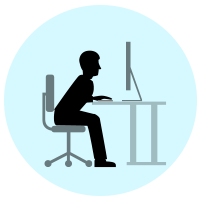 Although your muscles have recovered somewhat during your walk, they’ll still be carrying fatigue through from the morning. Any respite you gave yourself won’t last, as the post-lunch food coma strikes, particularly if it’s been a carb-heavy meal. Bloodflow to your muscles and brain reduces as the body focuses its attention on getting your gastrointestinal tract working to process your lunch.
Although your muscles have recovered somewhat during your walk, they’ll still be carrying fatigue through from the morning. Any respite you gave yourself won’t last, as the post-lunch food coma strikes, particularly if it’s been a carb-heavy meal. Bloodflow to your muscles and brain reduces as the body focuses its attention on getting your gastrointestinal tract working to process your lunch.
Bad news for your concentration, and your posture. You’re mentally sluggish, and with your attention span shortened, and your posture quickly deteriorates, for 2 reasons. First, a short attention span makes it harder to maintain a good seated posture. And second, the reduction in blood to the core muscles means that they fatigue further and faster.
3.30pm onwards – hanging in your straps
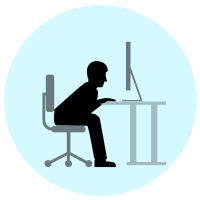 Welcome to the position you’re going to be in for the rest of the afternoon/early evening. Your muscles are no longer doing much to hold you up. Instead you’re being supported by the structures of your spine and your ligaments.
Welcome to the position you’re going to be in for the rest of the afternoon/early evening. Your muscles are no longer doing much to hold you up. Instead you’re being supported by the structures of your spine and your ligaments.
However, your spine is designed to support your weight in a S-shaped curve not the C-shape that you’re now in. All that’s stopping your spine rounding even further are your ligaments, and the bone-on-bone contact of the vertebrae, as the discs (the spine’s shock absorbers) are pressed backwards towards the nerves
As muscles become over tired, over-stretched and/or and knotted, and exacerbated by the weight of the head effectively doubling the usual load on the neck and back muscles, this position becomes uncomfortable very quickly. Think muscle pain from the base of the spine all the way up your back, continued burning of the base of your neck and worst case scenario, nerve compression and referred pain into your arms and legs (Sciatica or Brachialgia).
6.30pm – homeward bound
I really hope your train home is full. That way at least you’ll have to stand up on the way home before you sit back on your lovely soft, squishy sofa to eat dinner off your lap. Or you head for the gym to finish off a day’s slouching with a full-on HiiT session minus the proper warmup – well, it’s always hard to get away from the office on time, isn’t it? (Two different options, but each differently bad from an ‘accident waiting to happen’ point of view).
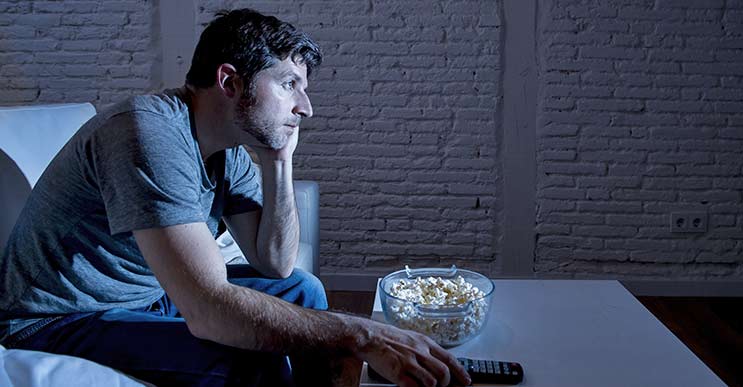
Have a nice day.
The Physiology of slouching
The Head
As the spine moves from an S-shape to a C-shape the head position changes. No longer centred over the spine, it’s now carried forward of its centre of gravity. For every inch the head moves forward, the weight supported by the muscles of the neck and upper back increases by 10lbs.
The Discs
Rounding of the spine creates pressure from the front of the disc towards the back (posterior migration), migrating it towards the spinal nerve roots. Over time this weakens the annulus (outside fibres), and increases the predisposition to a disc bulge or prolapse.
The Ligaments
Once the muscles can no longer hold you, you’re ‘hanging’ on your ligaments. These ligaments are heavily innervated by nerves and will produce pain during this sustained stretch.
The muscles of your back
Slouching lengthens the muscles of the back, leaving them in a weakened position, disabling their ability to work efficiently.
Muscles of your legs
A sustained sitting posture – and the resulting disuse of these muscles – causes your hamstrings and hip flexors to become short and tight leading to pain and postural dysfunction.



